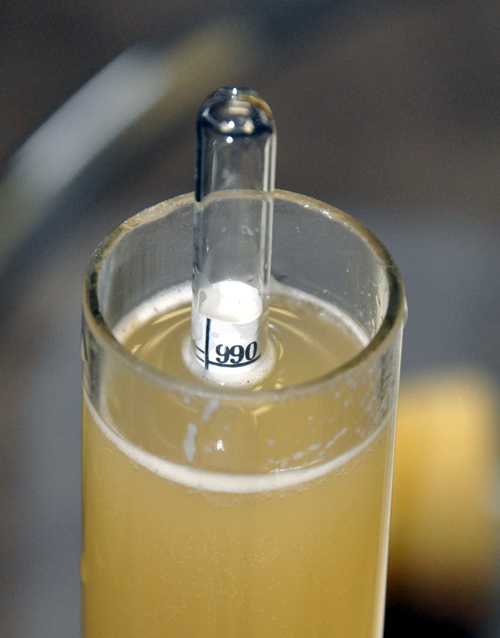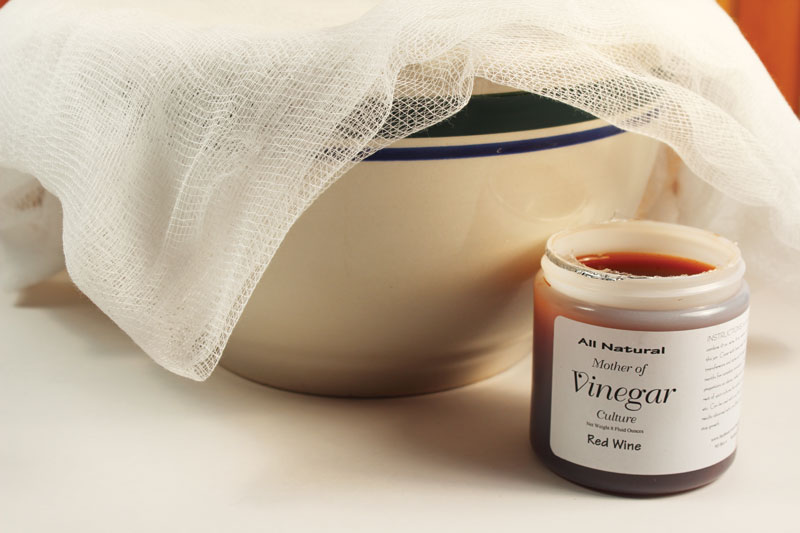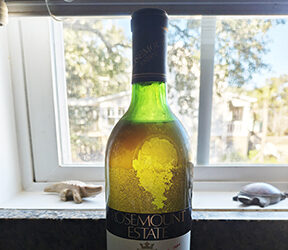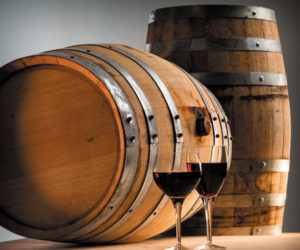Q What is a good rule of thumb to conclude wine fermentation is complete? I have received the same reading for several days in a row but still see bubbling at the top of my container. The specific gravity is right below 1.000 but I have heard it needs to get below 0.995. Is this true?
Also, what is good protocol after fermentation has completed? Would you recommend chilling down to 50 °F (10 °C) then racking?
Brent Mooney
Forest Hill, Maryland

A It certainly sounds like you are getting into the dryness zone. Specific gravity is the ratio of the density of a liquid in relation to the density of water, calibrated at a specific temperature (usually 60 or 68 °F/16 or 20 °C). Depending on which source you check (various winemaking books, websites, etc.) folks seem to agree that “dry” table wine usually clocks in around 0.990–0.996 specific gravity.
Why the range? Every wine is different and as such, every wine does actually contain a small amount of non-fermentable sugars and it’s unusual for a wine to go so low as to achieve “no sugar” 0.00 g/L glucose + fructose. “Dry” is philosophically defined (in my opinion) as not enough sugar left to taste or that any yeast cell will ferment as well as the place where the fermentation naturally stops and the yeast just can’t ferment anymore. Most professional winemakers I know chemically define this point as 2 g/L residual sugar (RS) or less (<0.2%) though I have seen wines naturally settle at around 3 g/L RS or 0.3%.
Also don’t forget that specific gravity (SG) is a measure of density. There are a lot of things other than water and sugar that can affect the density of a wine so be sure you’re accounting for as many of those as you can. What is your wine sample’s temperature? As stated earlier, SG is usually calibrated against water at 60 or 68 °F (16 or 20 °C) measuring a specific gravity of 1.000 (check yours to make sure this is correct). If your wine is warm, it’ll be artificially less dense, and your reading will be off. Similarly, if your wine is colder than 60 °F (< 16 °C) it’ll be artificially dense and the hydrometer will float higher than it should. For this reason it’s important to check a hydrometer temperature correction chart to get an accurate reading. Carbon dioxide bubbles can also attach to the hydrometer, floating it artificially high, so do be sure to give it a spin in your measuring cylinder to dislodge them. Also make sure you’re reading the hydrometer line at eye level. If you look down on your hydrometer from above it can give a slightly skewed reading as a result.
If you’re following all of these good hydrometer-use tips and are seeing the same measure day over day, it’s likely your fermentation is finished. Have you ever heard of the Clinitest (sometimes called “the sugar pill”) method for testing for residual/fermentable sugar? You can buy little tablets that diabetics use to check their urine for sugar. By dropping a Clinitest tablet into a measured sample of your wine, and comparing the resulting color to a calibrated chart, you can see if there are any residual reducing sugars in your wine. This is a great (and quick, cheap, and easy) way to see if you’re dry or not once you start getting below 0.990 on the good ol’ hydrometer. Do be aware, however, that the tablets (copper sulfate is part of what makes them react) will also react with many of the pigments and phenolics in red wines, so red wine results tend to skew a little higher than white wines. You can help work around this by diluting a sample of red wine and multiplying the result accordingly. Please do realize that Clinitest tablets are not meant for internal consumption; they are poisonous so do not drink the test sample and be sure to keep away from pets and curious kids. Even if you’re still seeing bubbles on the top of your fermenter, it could just be carbon dioxide gas that’s escaping naturally or it could also mean you have a simultaneous malolactic fermentation going on, so gas bubbles are not always the best indicator at this stage.
Every wine is different and as such, every wine does actually contain a small amount of non-fermentable sugars and it’s unusual for a wine to go so low as to achieve ‘no sugar’ 0.00 g/L glucose + fructose.
Assuming your wine is dry, what’s the best protocol for the next step? You don’t mention what kind of wine you’re making in your question, but I’ll assume just for fun it’s a dry red table wine that you’d like to go through malolactic fermentation (MLF) and which you’re planning on storing in carboys with oak beans (or chips or sticks) for aging. Chilling the wine down is fine and will help settling, but if you do want it to go through the MLF that’s not a step that I recommend. Malolactic (ML) bacteria are inhibited by cold temperatures below 65 °F (18 °C). If you’re pretty sure the wine is dry, then let it sit for a few days to let the lees settle and rack off the heaviest lees into another clean, gassed container. I often use the phrase, “If it flows, it goes” to describe this phase — taking the light and medium lees (discard the heavy, sticky lees) is good for wine because they will break down later in the wine, helping to create a fuller, rounder mouthfeel. At this stage, in the carboy it’ll be sitting in for a while, I recommend adding about 55 grams of oak chips or beans per 5 gallons (19 L) of wine, which is about 3 g/L. Let the wine sit on the oak for two to three months, then taste it again and see if you’d like to add more. Be sure to keep your containers topped up — a topped wine is a happy wine!
Q I am going to start making some red wine vinegar. I know, how dare I actually introduce vinegar into my wines . . .
So, I have everything set up for my vinegar storage (a 5-L/5.3 qt. oak barrel) and the wine’s ready to go into the container. My question is where can I keep this set up? Obviously, it will not be in the basement with my wine room.
Is the 1st floor a safe option? In other words, is that far enough away to keep the wine room safe from contamination? The only other place I have is on the second floor in the bedroom/exercise areas and I’m not too excited about breathing vinegar through the night. I have a garage, shed, and porch but they are likely too cold to be an effective storage/making area.
Short of going to someone else’s home who is not making wine, what would you recommend?
Susan Hammond
East Greenwich, Rhode Island
A You got a chuckle out of me. Indeed, how dare you introduce vinegar to your wines! I’m actually very happy that you’re writing so you can learn how not to introduce vinegar to your wines and in fact it seems like you’ve put a lot of thought into it. As many of my readers will know, wine turns into vinegar through the action of a group of bacteria known as Acetobacter, which eat alcohol and turn it into acetic acid, the sour yet pleasantly palatable acid that gives vinegar its “zing.”
Acetobacter are literally everywhere. They hang out on everyday surfaces, they live on our kitchen counters, they even hang out in the air we breathe. They’re so ubiquitous that it’s unlikely that you’ve got a room anywhere in your house that’s free of them. In fact, I’d wager your own basement wine room is the place with the highest cell count, because Acetobacter will naturally colonize in higher numbers where the “food”, i.e., your wine, is. With that being the case, you ask, why even try to keep the vinegar stored somewhere else? The simple and intuitive answer of which you’re already aware is that your vinegar fermentation area, where you’ll be actively encouraging a flourishing Acetobacter colony, will soon become a population center to outrival even the darkest, dampest corner of your basement.

So yes, it does make sense to make your vinegar far, far away from where you make your wine. Ideally, this would be in a separate building, which could be kept at the temperature needed for good vinegar production, 60–80 °F (16–27 °C). Because the inside of your house will have its interior air in communication with your basement (even if you mostly keep the doors closed) it’s going to be that much harder to keep the “bad” bacteria away from your wine. It’s not just the air that can spread Acetobacter. Every time you (or the dog or cat) pass through the “vinegar room” you’d be colonizing yourself, your hair, and especially the soles of your shoes with Acetobacter, which would get transferred all over the house and eventually to the basement. You say your outbuildings are too cold, but, depending on the time of year, especially if you had an electric blanket or heating pad to help, is it possible to keep your vinegar containers in the temperature “sweet spot” for the three to four weeks typically needed for a vinegar fermentation? I’d hate to have you lose the hard-won produce of your old hobby in an attempt to try out a new one.
If I had to rank your locations, I’d say first choice would be your stand-alone shed or porch, with the temperature regulated with the addition of an electric blanket or heating pad. You may also want to think about making vinegar when the conditions are the most conducive to it, possibly during the late spring, summer, or early fall. My next choice for location would be your garage, especially if it’s a garage you don’t enter often and especially if it’s not the way you usually enter your house. If you must choose a room inside your house then choose the spot that’s the farthest away from your wine room in the basement, taking into account how much you pass through, enter, or spend time in that space. The more time you spend in “the vinegar area” the more time the Acetobacter will have to glom onto you and get colonized into other parts of your house.
I hope all of this helps you decide where to locate your vinegar project and doesn’t creep you out with visions of aliens taking over your body or zombies invading your cupboards. Just use common sense and be aware, and you should be fine.
Q So glad I just found your webpage on making melon wine (https://winemakermag.com/article/making-melon-wine).
I started fermenting cantaloupe juice a couple days ago with organic cane sugar dissolved in coconut water. Fermentation is active now. I see some red-colored speckles in a layer on top of the contents and would like to know if that is to be expected, to be strained, or whether the whole batch should be dumped. Do you have any thoughts on how I should approach this?
Chef Jem
Jackson, North Carolina
A Because cantaloupes have high pH, my guess is that the red speckles you’re seeing in a layer on top of your wine are bacteria colonies and no, they are not to be expected. According to a fruit pH chart I found online from Clemson University, the pH of cantaloupes usually falls in the range of 6.1–6.6. The pH of water is 7.0, and the pH of most table wines made from grapes fall in the 3.3–3.7 range, so are much more acidic than melon juices. Bacteria tend to thrive in a higher pH (lower acidity) environment, which is one part of the reason most wine in the world is made from grapes, whose lower pHs keep spoilage bacteria at bay better (alcohol being the other part of the equation). Wine made from grapes just naturally “happens” better than wines from other fruits, which sometimes need hefty acid additions.
As the article on making melon wines mentions, because melons grow on the ground (as opposed to grapes that are up off the ground on vines), they can pick up a lot of soil-borne microorganisms. Cut into the skin and you’ve just introduced potentially harmful bacteria into the fruit you’re about to press for the juice to make your wine.
Do you need to throw the wine out? Not necessarily, but you might want to be careful if your pH is high and your wine is still in the juice stage. Foodborne bacteria like E. coli and Salmonella can survive on cut watermelons and cantaloupe, and in the raw juice. Luckily, a pH under 4 will inhibit the growth of just about all food-poisoning bacteria and increasing alcohol levels will also help eliminate them. Dr. Linda Bisson, Professor of Enology when I was a student at UC-Davis often told her classes, “No human pathogen can survive in wine.” There’s a reason that drinking wine was safer than drinking water in the Middle Ages and also why wine was used by ancient civilizations to disinfect and clean wounds. However, cut cantaloupe and raw cantaloupe juice can harbor bacteria harmful to humans so do be careful and practice smart food-handling practices when using them in meals, juices, and in winemaking.
Foodborne bacteria like E. coli and Salmonella can survive on cut watermelons and cantaloupe, and in the raw juice.
Keep an eye on how your wine is progressing because surface-growing bacterial colonies are rarely good news in winemaking. You also could be experiencing a flush of spoilage yeast; the fact that you’ve got colonies growing on the surface also leads me to include aerophilic (oxygen-loving) “film yeast” in the spoilage-organism suspect pool. “Red-colored speckles” doesn’t sound like any common winemaking yeast or bacteria I’m familiar with and it’s very possible they (and other organisms you can’t see) may throw off the flavor and aroma of the finished product. Melon wines are ephemeral products, with the heady aromas we love dissipating very quickly during fermentation. What remains often just seems like the “ghost” of the fruit, even with sound bacteria-free fermentations. This will be even more so if you’ve got any kind of spoilage organisms in there doing their dirty work.
To avoid surface-growing film yeast (and also spoilage bacteria) next time, make sure your sanitation procedure is top-notch and get the alcoholic fermentation going right away with a strong strain of yeast so you get a protective layer of carbon dioxide formed on top of the surface. I also don’t recommend using any kind of coconut meat, milk, or water in winemaking as it will contain fat. Especially if your coconut water is the kind sold with small pieces of coconut pulp in it; those little bits will float to the top, forming a perfect little raft for spoilage organisms to grow on!
If your wine goes dry and you still like how it smells and tastes, I recommend sterile filtering it, if possible, with a unit like those made by the popular Buon Vino brand. They can be spendy so see if your local home winemaking supply store rents filters or if a local home winemaking club has one you can borrow. Filtration (if done with filtration technology that is 0.45 micron sterile or “nominal”) will exclude all yeast and bacteria from your wine, which will help set it up for sound aging. Be sure to adjust the free sulfur dioxide of your wine to around 25–30 ppm (there is a great sulfur dioxide calculator at winemakermag.com/sulfitecalculator to help you do that) so you know your wine will be further protected from oxidation and microbial spoilage during aging. Speaking of which, melon wine lacks the tannins and antioxidants that grape wines naturally have, so it’s recommended to drink them within a year. I wish you luck!







